Low Mass Star Formation
My recent work has revolved around Magnetic fields in young stellar objects. The reason I dove down this particular rabbit hole is because I am interested in the lifetimes of circumstellar disks and the timescales available for planet formation.
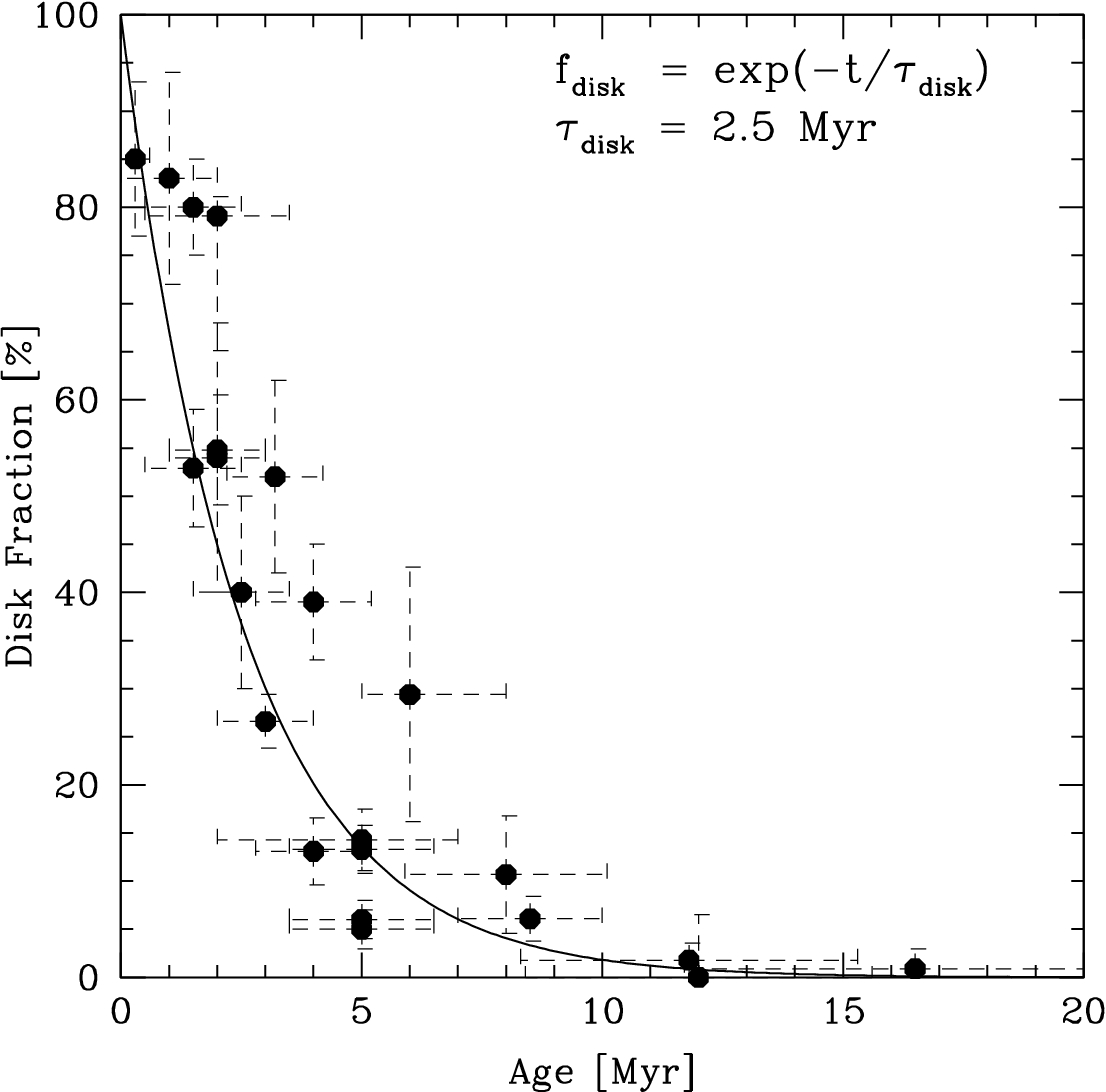
The above plot (from Mamajek 2009) shows the evolution of disk fraction (number of sources in a cluster with evidence for a circumstellar disk) as a function of cluster age (median isochronal age). Clearly, circumstellar disks dissapate with time, but what governs the evolution of an individual disk? Young clusters have high disk fractions, and older clusters have low disk fraction, but there exist objects in young clusters which seem to have already lost their disks, and objects in old clusters with long-lived disks. Are these outlying objects due to age spreads within clusters?
The ages of the youngest (< 10 Myr) clusters are usually determined by placing objects on the HR Diagram and comparing to theoretical isochrones. The age of the cluster is usually taken to be the median age of all cluster members. Objects are usually placed on the HR Diagram via a spectroscopic determination of spectral type. In the most embedded clusters, optical spectral types are not possible, and objects must be spectral typed in the infrared, where spectral types are not as certain. These observational difficulties (reddening, spectral typing uncertainties, etc...) inject significant uncertainty into the location of an object in the HR Diagram.
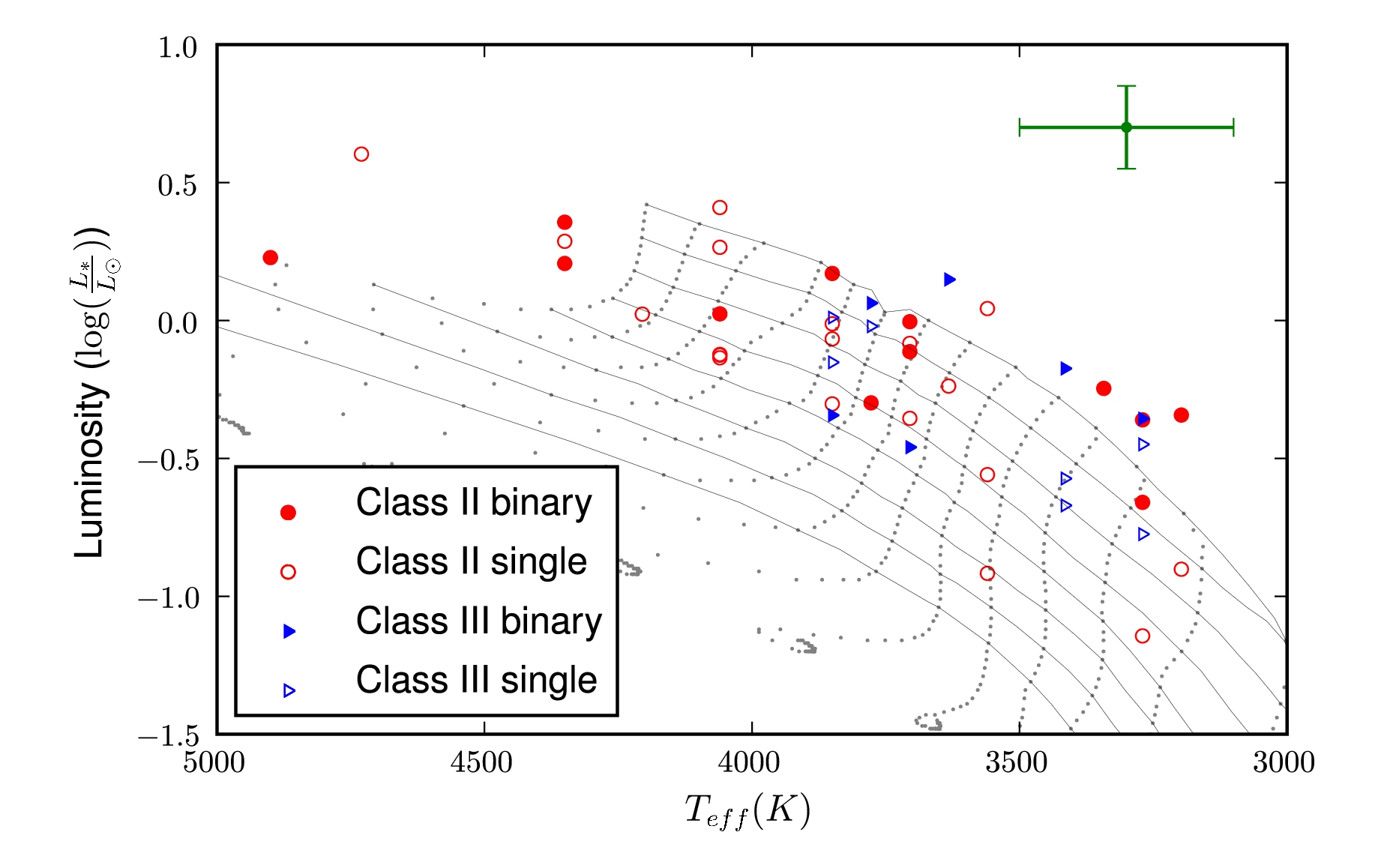
As seen in the above plot, there is a large observational scatter in the HR Diagram. In an attempt to determine possible reasons for this scatter, I began investigating the effects on magnetic fields on the emergent spectra of young stellar objects. The following figure shows a high resolution Stokes I spectrum of the K-band Na feature under a 2.0 kG magnetic field synthesized with MoogStokes.
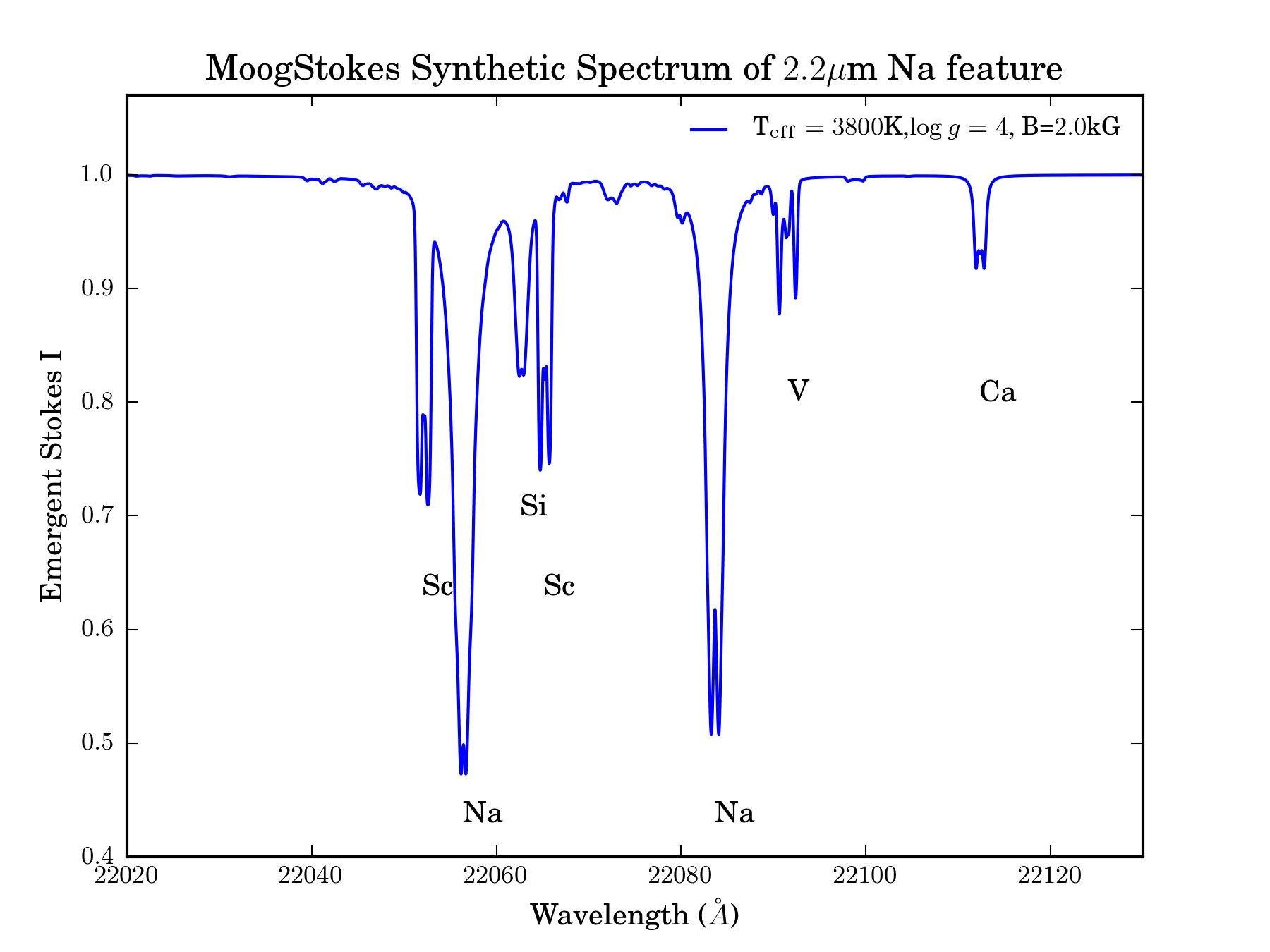
At high resolution (R~30,000), the Zeeman splitting of the spectral lines become apparent. However, the Zeeman effect also can affect the equivalent width of strong lines often used to determine spectral types. Imperfect knowledge of a source's magnetic field and/or surface gravity can induce significant errors (+/-200 K) into the translation of equivalent widths to spectral types/effective temperatures. These errors in turn reduce the precision of locations of objects on the HR Diagram. These errors can introduce biases into studies of young populations (disk lifetimes, initial mass functions, etc...)
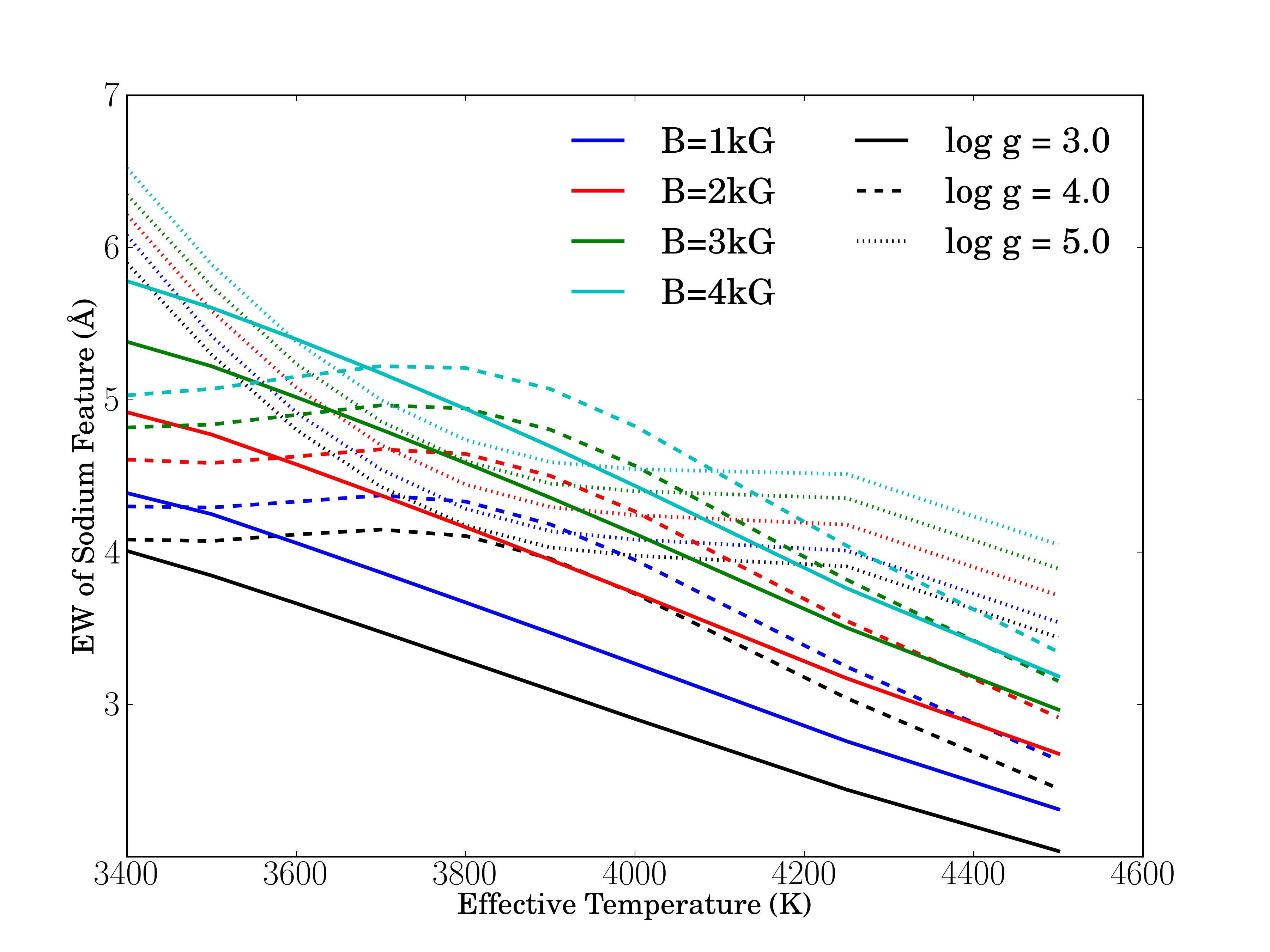
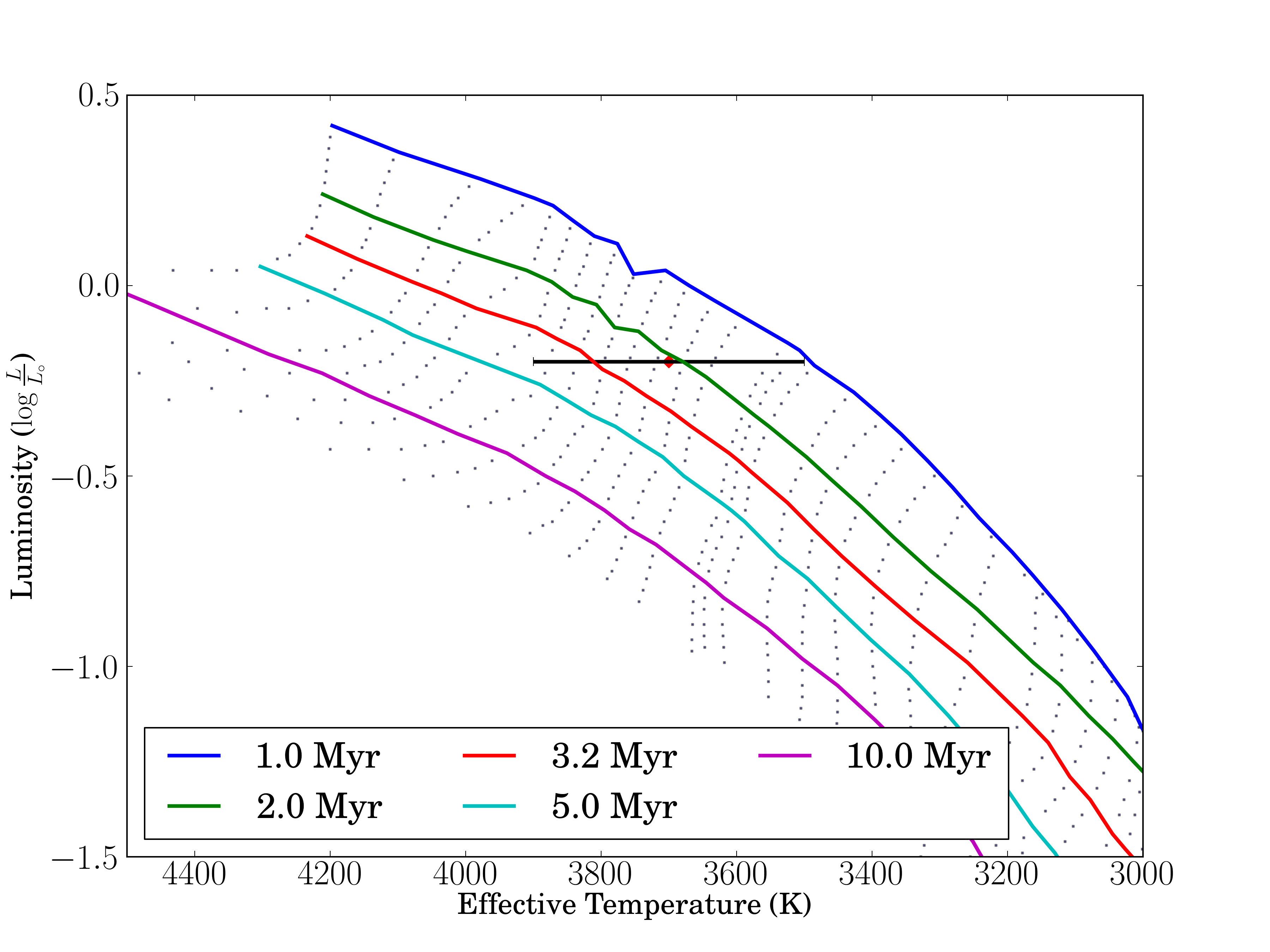
I am attempting to use the techniques of spectroscopic analysis to better determine an object's location on the HR Diagram. The above figure shows a sample of young objects in Ophiuchus plotted on top of the Baraffe et al. evolutionary models. By directly measuring the effective temperature and surface gravity of a young stellar object, spectral typing and dereddeing are unnecessary to place an object on the theoretical HR diagram (Teff vs log g). However, these young objects are often heavily spotted and sport extremely strong (> 2 kG) magnetic fields. These strong magnetic fields can affect the profiles and equivalent widths of absorption lines used in determining infrared spectral types, as well as circumstellar veiling. These effects are measurable, even at spectral-typing resolving powers (R~2000). As a first step toward including the effects of these magnetic fields, I developed MoogStokes, a spectral synthesis code capable of including the effects of Zeeman broadening due to strong stellar magnetic fields. Armed with this code, I can create three-dimensional grids of models (Teff, log g, and < B >) to compare with observed spectra and determine best-fit parameters for young stellar objects.